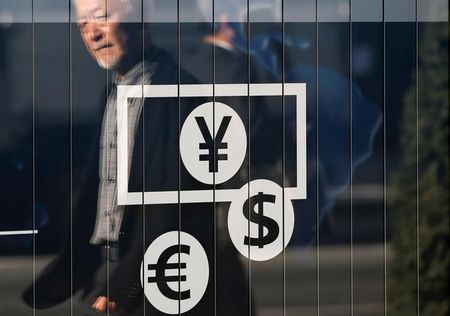
Options markets indicated a sharp increase in implied volatility, particularly as the tenor of the options included the upcoming U.S. election.
Currencies such as the Euro (EUR), Australian Dollar (AUD), New Zealand Dollar (NZD), Mexican Peso (MXN), and South Korean Won (KRW) experienced solid increases in volatility.
According to analysts by Standard Chartered (OTC:SCBFF), the most substantial percentage rises in implied volatility were observed in the Chinese Yuan (CNH), Mexican Peso (MXN), Euro (EUR), South Korean Won (KRW), and Singapore Dollar (SGD).
FX risk amid US election
Investors are closely monitoring the potential foreign exchange risk associated with the US election by analyzing the rise in implied volatility over one- and two-week horizons. This increase highlights a heightened focus on depreciation risk, especially with the changing odds for President Trump in betting markets.
The observed changes began a few days before the one and two-week option windows, with notable movements around October 22 or 23, minimizing the likelihood of these changes being merely coincidental.
For the two-week implied volatility, the largest increases were seen in the currencies of Mexico, South Korea, South Africa, China, Japan, Australia, Europe, and New Zealand. While there is greater confidence in the movements of the two-week implied volatility as an indicator, one-week volatility signals are expected to gain strength as the week progresses.
In contrast, the Indian Rupee (INR), Chilean Peso (CLP), Colombian Peso (COP), Israeli Shekel (ILS), and Canadian Dollar (CAD) were among the least affected.
The pronounced run-up in implied volatility for the Singapore Dollar (SGD) stood out, especially since other currencies with similar volatility profiles did not exhibit comparable increases. Latin American currencies, excluding the Mexican Peso, and certain Asian currencies anticipated to be affected by tariffs on China appeared to be less impacted by election-related volatility.
Compared to the 2016 and 2020 elections, the rise in implied volatility has been more significant this year, signaling market uncertainty regarding both the election outcome and the subsequent policy agenda, particularly if President Trump were to win. This uncertainty extends to whether the outcome will result in a sweep or split Congress.
In terms of spot market movements, the Bloomberg Dollar Spot Index (BBDXY) has risen by 1.5% since mid-October. There is a possibility that most of this increase could be reversed if the election results do not indicate the adoption of extreme policies.
The AUD, NZD, and JPY, which have been the weakest G10 currencies in this period, could see a reversal in both spot and volatility if the election implications are perceived to be less severe than currently priced in by the volatility markets.
This post is originally published on INVESTING.



